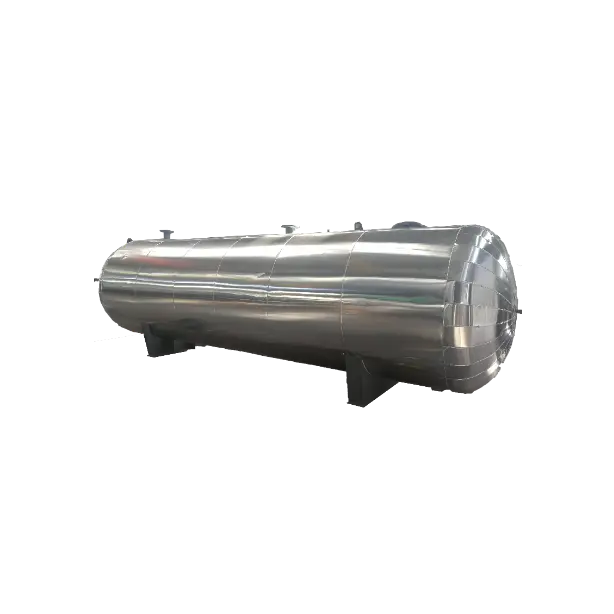Steam Accumulator 101: Common Questions Answered
How Steam Accumulators Work
Steam accumulators function by storing excess steam that cannot be immediately used. This stored steam is then recirculated back into the system when needed. The primary types of steam accumulators include fixed volume, variable volume, and pressure accumulators.
- Fixed Volume Accumulators: These accumulators have a set capacity and operate based on pressure. When the pressure in the system exceeds a certain level, steam is released to maintain pressure balance.
- Variable Volume Accumulators: These adjust their capacity based on the pressure and temperature of the steam. They offer better efficiency by handling various operating conditions.
- Pressure Accumulators: Designed to store steam at a specific pressure, they are ideal for high-pressure industrial applications. They come equipped with safety features to prevent overpressure.
Key Benefits of Using Steam Accumulators

Steam accumulators provide several advantages, including improved steam quality, energy efficiency, and reduced operational costs. By storing steam, they help improve the consistency of the steam supply, which is crucial for many processes. This reduces the need for frequent regeneration, leading to significant cost savings.
- Improved Steam Quality: Steam accumulators enhance steam quality by eliminating contaminants and condensate buildup. This results in cleaner, more efficient steam that can lead to better performance of the equipment using this steam. It also reduces the emission of flue gases, contributing to environmental sustainability.
- Energy Efficiency: By storing and recirculating steam, accumulator systems reduce the need for continuous steam generation. This leads to lower energy consumption and operational costs. The consistent steam supply provided by accumulators also helps maintain optimal process conditions, improving overall efficiency.
- Reduced Operational Costs: Steam accumulators extend the lifespan of equipment by minimizing the wear and tear associated with frequent steam regeneration. They also reduce the need for external regeneration equipment, further cutting costs. Regular maintenance is essential but offers a return on investment by avoiding costly breakdowns and maintenance downtime.
Debunking Myths About Steam Accumulators
Several misconceptions surround steam accumulators. Let's address some of these myths to provide a clearer picture.
- Cost-Effectiveness: While the initial investment in steam accumulators is higher than traditional systems, the long-term savings in energy and maintenance costs make them a cost-effective solution. The return on investment is achieved over time through reduced operational costs.
- Maintenance Requirements: Steam accumulators require regular maintenance, but this is manageable. Proper cleaning and inspection can prevent issues like corrosion and leaks, ensuring optimal performance. Unlike some other systems, the longevity and reliability of accumulators make them a worthwhile investment.
- Operational Efficiency: Steam accumulators can indeed enhance operational efficiency by stabilizing steam pressure and temperature. This is particularly important in processes that require consistent conditions, such as those in manufacturing and chemical industries.
Applications of Steam Accumulators
Steam accumulators are used in a variety of industries, each benefiting from the controlled and consistent steam supply they provide.
- Power Plants: Accumulators help regulate steam pressure and improve overall efficiency. By maintaining a steady steam supply, they reduce the need for frequent regeneration, leading to optimal performance.
- Manufacturing: In industries like metalworking and forging, consistent steam supply is crucial. Accumulators provide the necessary steam to maintain high-temperature processes, ensuring quality and efficiency.
- Chemical Industry: For processes that require precise temperature and pressure control, steam accumulators are vital. They help maintain the necessary conditions for reactions, leading to better product quality and yield.
Installation and Maintenance Requirements
Proper installation and regular maintenance are essential for the optimal performance and longevity of steam accumulators.
- Installation: The vessel must be sized to handle the expected steam load. It should be connected to the existing steam system using flanges and adapters. Safety valves and feed pumps must be tested to ensure proper operation.
- Maintenance: Regular inspection is necessary to check for blockages or leaks. Accumulators should be cleaned regularly to remove debris that could interfere with performance. Over time, they may require periodic refilling of cooling water to maintain optimal efficiency.
Future Prospects and Innovations
The future of steam accumulators is promising, with ongoing advancements in technology leading to more efficient and durable solutions. Innovations such as intelligent monitoring systems provide real-time data and predictive maintenance capabilities, enhancing overall performance. Additionally, the integration of steam accumulators with renewable energy grids is being explored, offering the potential for more sustainable and efficient industrial processes.
Real-World Examples
To illustrate the benefits of steam accumulators, consider a case study from a metalworking factory that installed an accumulator system. Before the installation, the factory faced frequent breakdowns and high energy costs due to inadequate steam supply. After installing the accumulator, they experienced a significant decrease in maintenance downtime and an increase in energy efficiency. This led to a noticeable improvement in overall productivity and reduced operational costs.
This refined version ensures the article is clear, engaging, and suitable for social media platforms.
